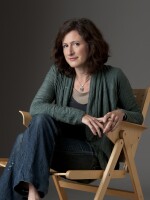The bespectacled architect smiled from his white-walled office in Yokohama.
"I'm very proud," he said in English, of winning the 2024 Pritzker Architecture Prize. Sometimes called "the Nobel of architecture," the award has gone to such icons in the field as Philip Johnson, I.M. Pei, Renzo Piano, Rem Koolhaas and Zaha Hadid since it was established in 1979.
Japanese architect Riken Yamamoto was born in 1945 to civilian parents in Beijing, China. His engineer father was part of an occupying workforce. When the family moved back to Japan in 1947, it was to a Tokyo that had largely been reduced to rubble in the last days of World War II.

"My father made my family house by himself because there [were] no houses ... and many people made their own family houses by themselves in Tokyo," he remembered. "Tokyo was nothing [after the] bombing by the Americans. This was a double-story house, very small, very poor wooden house."
When the boy was only 4 years old, Yamamoto's father died. The family moved to his mother's hometown of Yokohama, where she opened her own business, a pharmacy. His postwar childhood spent watching a country rebuild, he says, informed his fascination with the relationship between architecture and community.

"Riken Yamamoto has really spent his entire life creating architecture that, I would say, connects the dignity of architecture with human social conditions in a very generous, quiet way," Deborah Berke told NPR. A Pritzker Prize jury member, she's also dean of the Yale School of Architecture.
"He does public buildings that feel as though they belong in the communities in which they sit," she continued. "They enrich the lives of those communities. It's not just fancy buildings. Although he does beautiful, "fancy" buildings like museums, he also does housing and fire stations and city halls. So, buildings that serve their communities. They're not necessarily monumental. They're really about bringing dignity to everyday life and elegance to everyday life."

Soon after graduating from Nihon University and earning a master's degree at Tokyo University of the Arts, the young architect founded his practice, Riken Yamamoto & Field Shop, in 1973. He traveled widely, observing living conditions in Brazilian favelas, coastal homes along the Mediterranean and communities in India, Iraq and Nepal. He investigated how people created thresholds between public and private spaces, and made systems of community visible.
He said the ancient city of Ceuta, on the northernmost tip of Morocco, inspired him to create the interconnected alleys and plazas of Beijing's Jian Wai SOHO complex — a gleaming cluster of condo towers, boutiques and restaurants.


The architect is responsible for numerous buildings in China, Korea and Switzerland, but much of his work is in Japan. His firm designed Tokyo's Fussa City Hall, seemingly wrapped in a powerful curving grid of squares. Deborah Berke says one of her favorite buildings is the bayside Yokosuka Museum of Art.
"What was incredible for me when I was there — and I was there with my family — was witnessing the kind of joyousness of everybody who was there, old people, young people, families, people alone to see the art," she told NPR. "That experience for me, somehow, was its welcomingness. Nice for activities from the youngest to the oldest, and allowing you as a visitor to feel part of something larger. That was magical for me."
One of Yamamoto's most magical buildings might be the transparent firehouse he designed in Hiroshima. "The place is especially popular with children," the architect allowed. "They like to see the fireman training."
It's covered in glass louvres, so you can see the firefighters' activities from the outside.


In its citation, the Pritzker jury noted the intergenerational power of Yamamoto's work. "By the strong, consistent quality of his buildings, he aims to dignify, enhance and enrich the life of individuals — from children to elders — and their social connections," the jury wrote.
"For creating awareness in the community in what is the responsibility of the social demand, for questioning the discipline of architecture to calibrate each individual architectural response, and above all for reminding us that in architecture, as in democracy, spaces must be created by the resolve of the people, Riken Yamamoto is named the 2024 Pritzker Prize Laureate."
Copyright 2024 NPR. To see more, visit https://www.npr.org.




